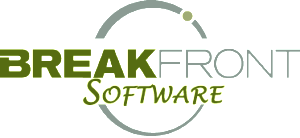
New QuickBooks Export from EQ Sales Orders
We’ve added the ability to export Sales Orders to QuickBooks.
When you export Sales Order to QB, it actually sends over all relevant data that QB can accept. This includes Customer data, SalesRep data, Address Data, Payment Terms, Line Item Data, Tax Data and more.
NOTE: If the Customer, Job or Order does not exist in QuickBooks, it will create them on import. If they already exist in QB, it will “update” the information with the NEW information from EQ. For example, if you export a Sales Order to QB, then make changes to that Sales Order in EQ, if you export the SO again it will update the QB SO to match the new information from EQ so it’s correct.
You can either export 1 Sales Order at a time, or you can select multiple Sales Orders in EQ and export them all at once. Then you import that 1 file with multiple SO’s into QB and it will create all of them in QB as separate SO’s.
There are 3 different options on how you want to export your Orders. You can click this export button on the Order List (on an individual Order or in Bulk Actions), or inside of an individual Order in the Sidekick.
Export #1 – QuickBooks Detailed CSV
The “Detailed” export will export all line items individually. So if you have 30 lines items on your EQ Sales Order (20 cabinets, 3 countertops, 4 hardware and 3 labor lines for example), it will import all 30 lines into your QB Sales Order or Estimate.
If the line item has a matching “Item” in QuickBooks, it will map to that item (but use the sell price and qty and other info from the EQ line item). If the item does not exist in QB it will create a new misc item for each one in QB.
Export #2 – QuickBooks Summary CSV
The “Summary” export does not send over each individual line item to QB, but “rolls up” the line items into a bucket by Supplier from EQ.
If you do not want individual lines on your QB Sales Orders / Estimates, but would rather the lines be grouped by type of product (i.e. rolled up to “Cabinets”, “Hardware”, “Labor”, “Countertops”, etc.), you would choose this export. You determine what the roll-up is called by putting the name of it in your Supplier record in the “Accounting Reference” field.
In this export, if I have “Cabinets” from 3 different manufacturers on my EQ Order, and all 3 Suppliers had “Cabinets” in the Accounting Reference field, all the line items from those 3 manufacturers would roll up to 1 item called “Cabinets” for the export into QB. The same is true for all line items. They roll up to whatever the Suppliers has in that field.
This export results in QB Sales Order with lines like “Cabinets” for $10,000, “Countertops” for $5,000, “Hardware” for $550, etc. Instead of showing the actual line items.
Export #3 – QuickBooks Hybrid CSV
The 3rd export is the “Hybrid” export and is a combination of both the Summary and Detail exports. For the Hybrid export, if you have an Accounting Reference populated on the Supplier record, it will roll up all items for that Supplier (or multiple Suppliers) into 1 item. If there’s no Accounting Reference for a Supplier on the Order, the lines are detailed out for that Supplier.
An example of why you might use this export is if you want to roll up your “Cabinets” into 1 line in QB, but you want to show your plumbing products as separate products in QB. To get that you would have the Accounting Reference populated for your cabinet Suppliers, but nothing in the Accounting Reference field for your plumbing Suppliers.
New QuickBooks Export from EQ Purchase Orders
The same export function described above also exists for Purchase Orders in EQ. You use the same process, but do it from the Purchase Order instead of the Sales Order.
To utilize the QB import you’ll need the 3rd party plugin software that translates the exports, the EQ template for the exports, and a little training on how to use it.
Please contact support@breakfront.com or call 704-688-4080 to talk about getting setup to do this.



